It’s no coincidence you’re inundated with commercials touting sales on storage containers and organizing systems this time of year.
January is Get Organized month.
It’s when most people think about getting a fresh start and establishing new routines. Start organizing your home using these five tips.
1. Determine Your Learning Style.
An effective organizing system in your home or office isn’t just a matter of copying what your mom did. That might work, but only if your learning style is the same. Understanding your personality type, and learning style, leads to an organization system that actually works.
 Are you a kinesthetic learner, someone who needs to be actively engaged when learning new things? If so, you will want to be hands-on when setting up a system that will work for your needs.
Are you a kinesthetic learner, someone who needs to be actively engaged when learning new things? If so, you will want to be hands-on when setting up a system that will work for your needs.
If you learn by reading, creating lists and written step-by-step instructions are best.
Finally, if you are an auditory learner, just hearing instructions or talking through an organizing system with a professional organizer will be the most beneficial way to establish a system you can stick with.
2. Start small.
Just like diets, exercise routines, and financial planning, taking small steps can help you move toward bigger goals.
If the goal is to get the entire first floor of the house organized, pick a small space to start, like the hall closet. If the magnitude of that project seems too big, make it smaller by working on just the items hanging in the closet, or just one shelf in the closet. If you’re sorting through a stack of paper files, commit to sorting through one inch, or even a half inch, at a time.
It doesn’t seem like much, but small steps get you closer to your goal than you were the day before.
3. Set up a system.
Creating a system can help you get the most out of the time you spend organizing. Before you start cleaning and purging, make space for three piles in the middle of the room.
You’ll want a garbage bag for trash, a bag for donations (Blue IKEA bags work great), and a basket or box for misplaced items. As you work through the room sort items into those three categories. After you’re done sorting and organizing, give yourself time to return misplaced items to their correct home. Don’t stop what you’re doing to return the items to their proper place. You’ll lose focus and valuable time going from room to room in the middle of the project.
This system helps you minimize the amount of “spider-webbing” you do by walking around the house, and maximize the time spent working toward your goal.
4. Use clear containers.
If you’re looking for new organizing options, clear containers provide the best bang for your buck. Here’s why – it takes less time for your brain to think about what’s in the container if you can see into it. Opting for dark containers means you’ll lose seconds, or minutes, opening the lid to look in.
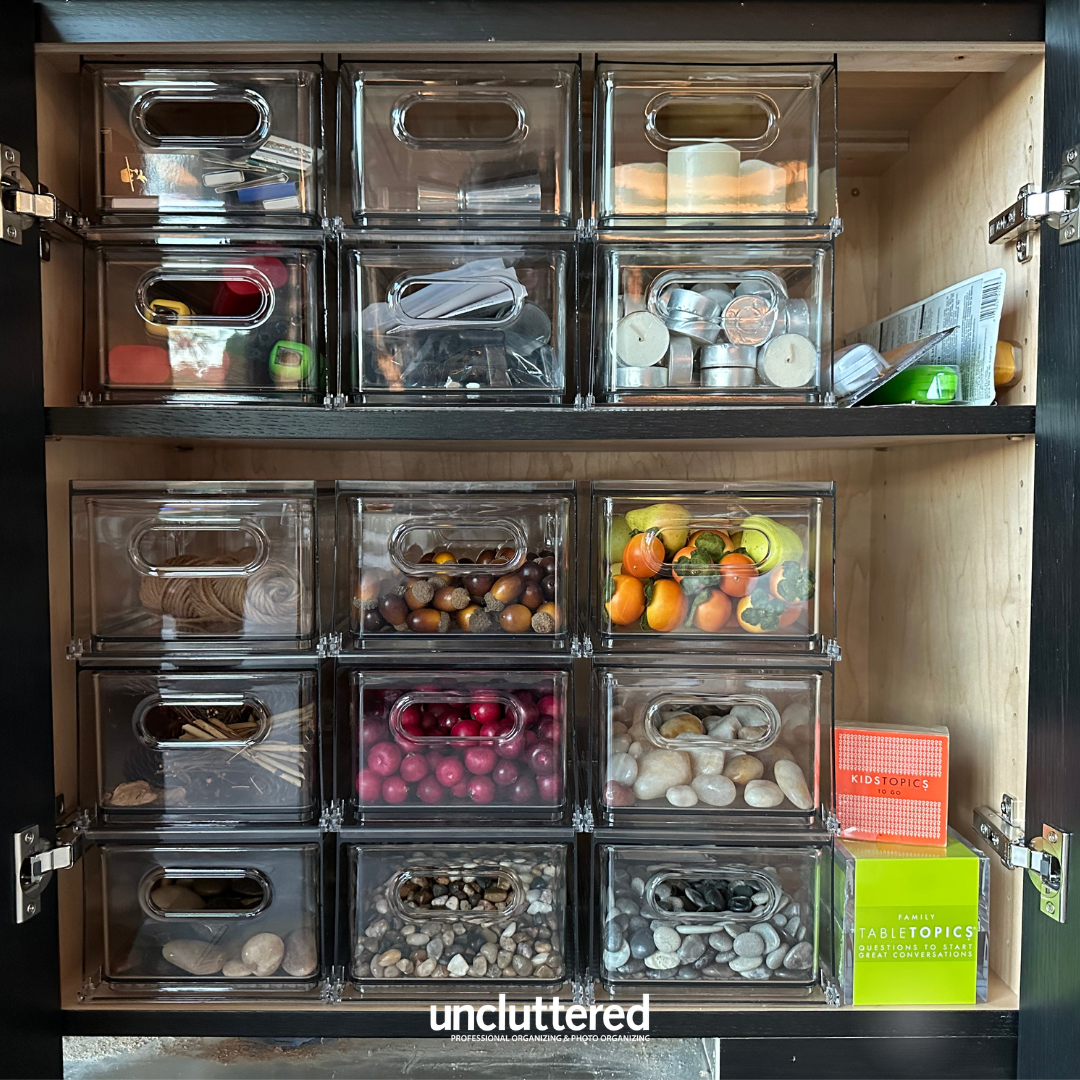
If your containers are going on exposed shelves where they will be seen, consider dressing them up a bit with nice labels.
5. A Lazy Susan isn’t lazy at all.
A Lazy Susan is a popular item in many kitchens, pantries, and refrigerators, but they’re useful in all sorts of spaces in your home. Consider using them in any weird cupboard space that limits your access to items at the back.
They’re also great in linen closets for toiletries, under sinks for cleaning supplies, and in corner cabinets to reach those items in the back that are hard to reach.
Understanding your personality type, and learning style, leads to an organization system that actually works.
If your home organizing project feels too big for one person, it could be time to talk with a professional organizer. Let’s start the conversation! Send us an email at info@unclutterednw.com and we’ll schedule a time to talk about what’s on your mind.



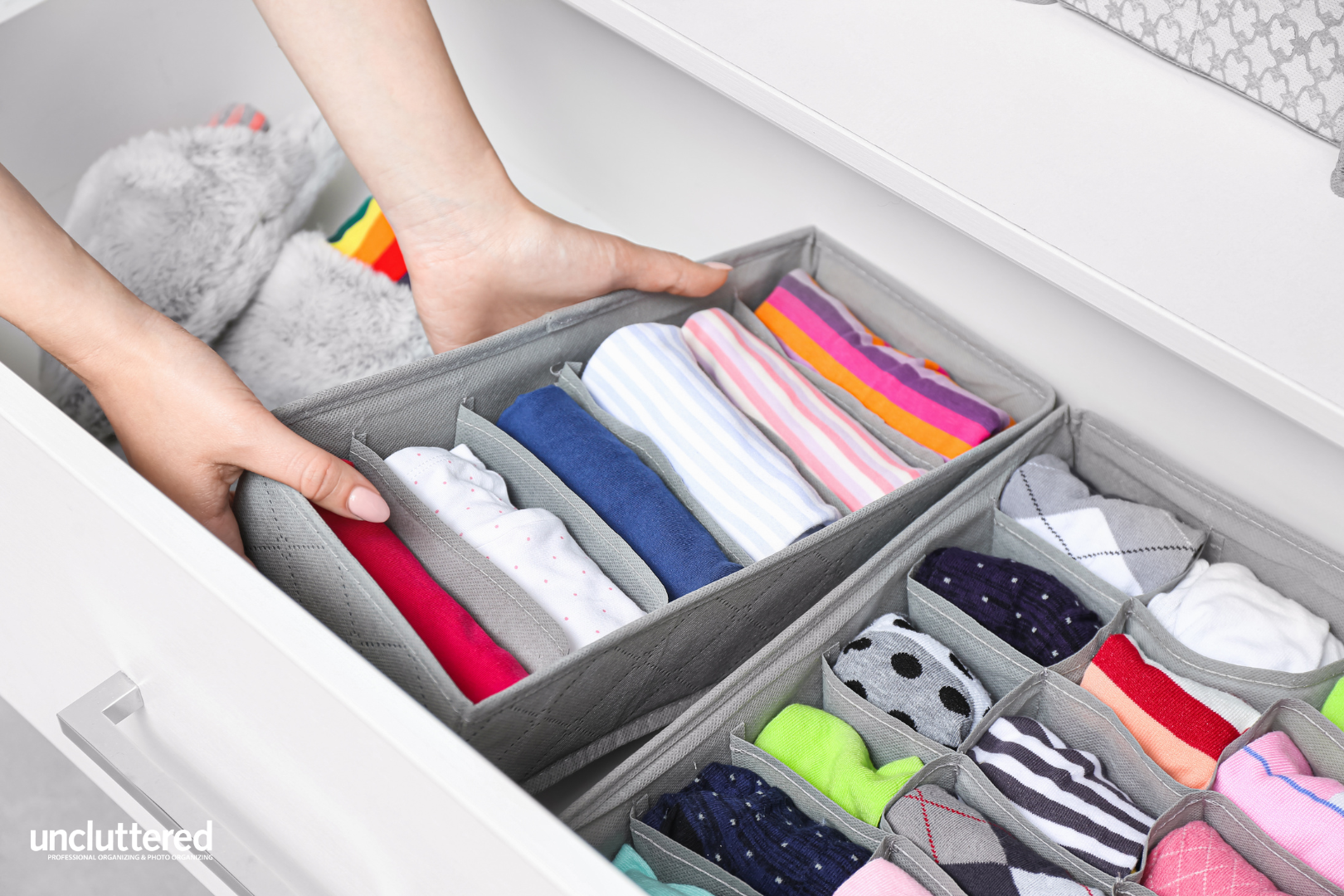
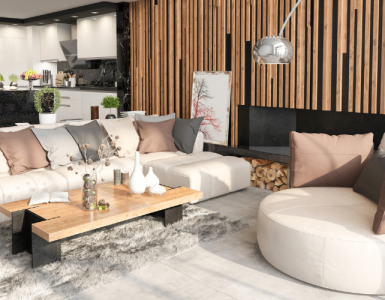
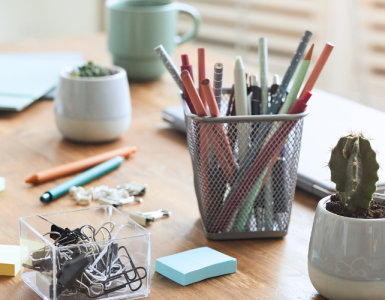
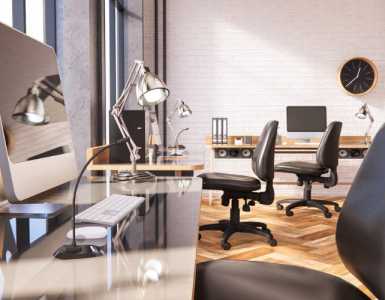
Add comment